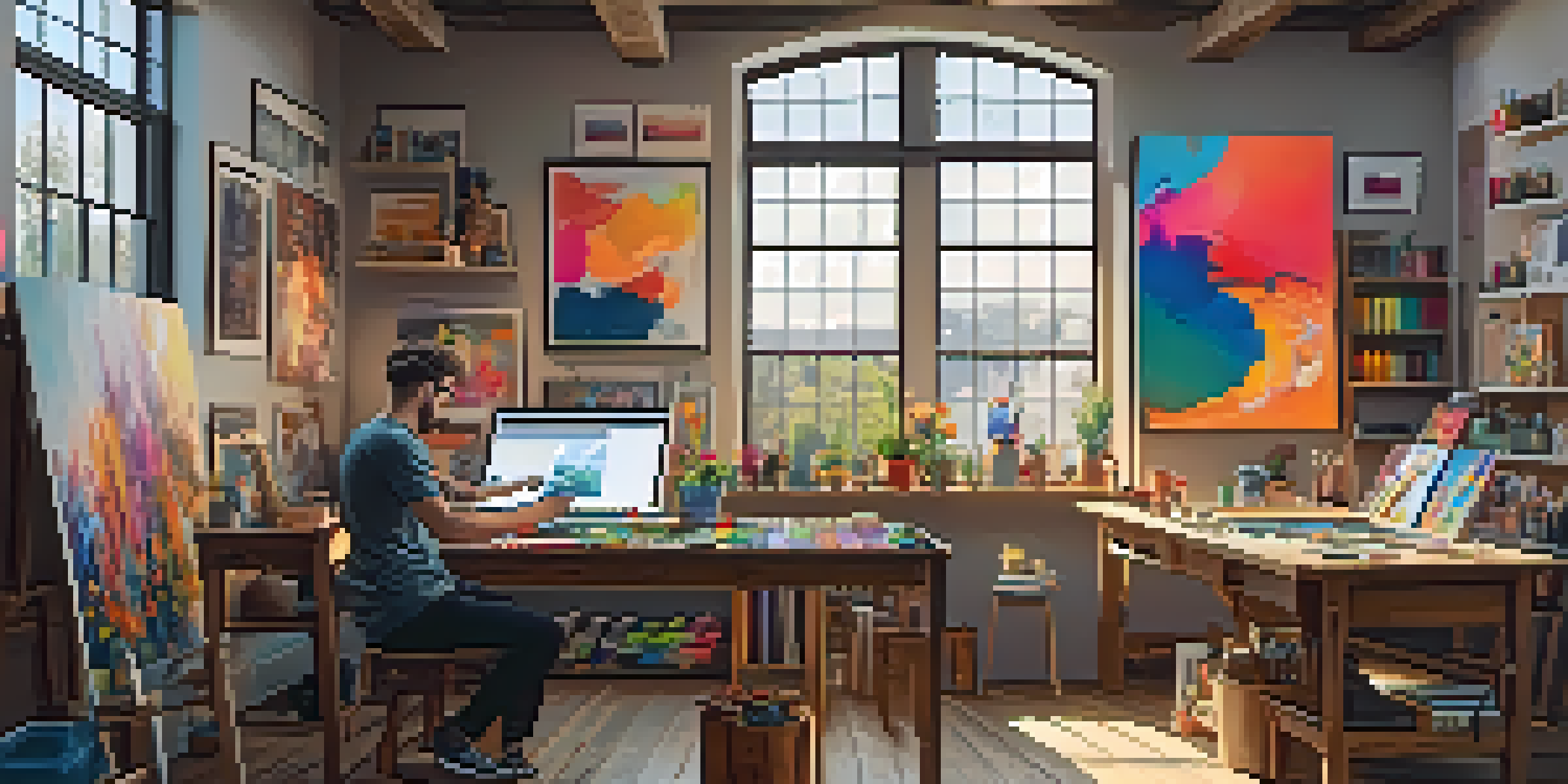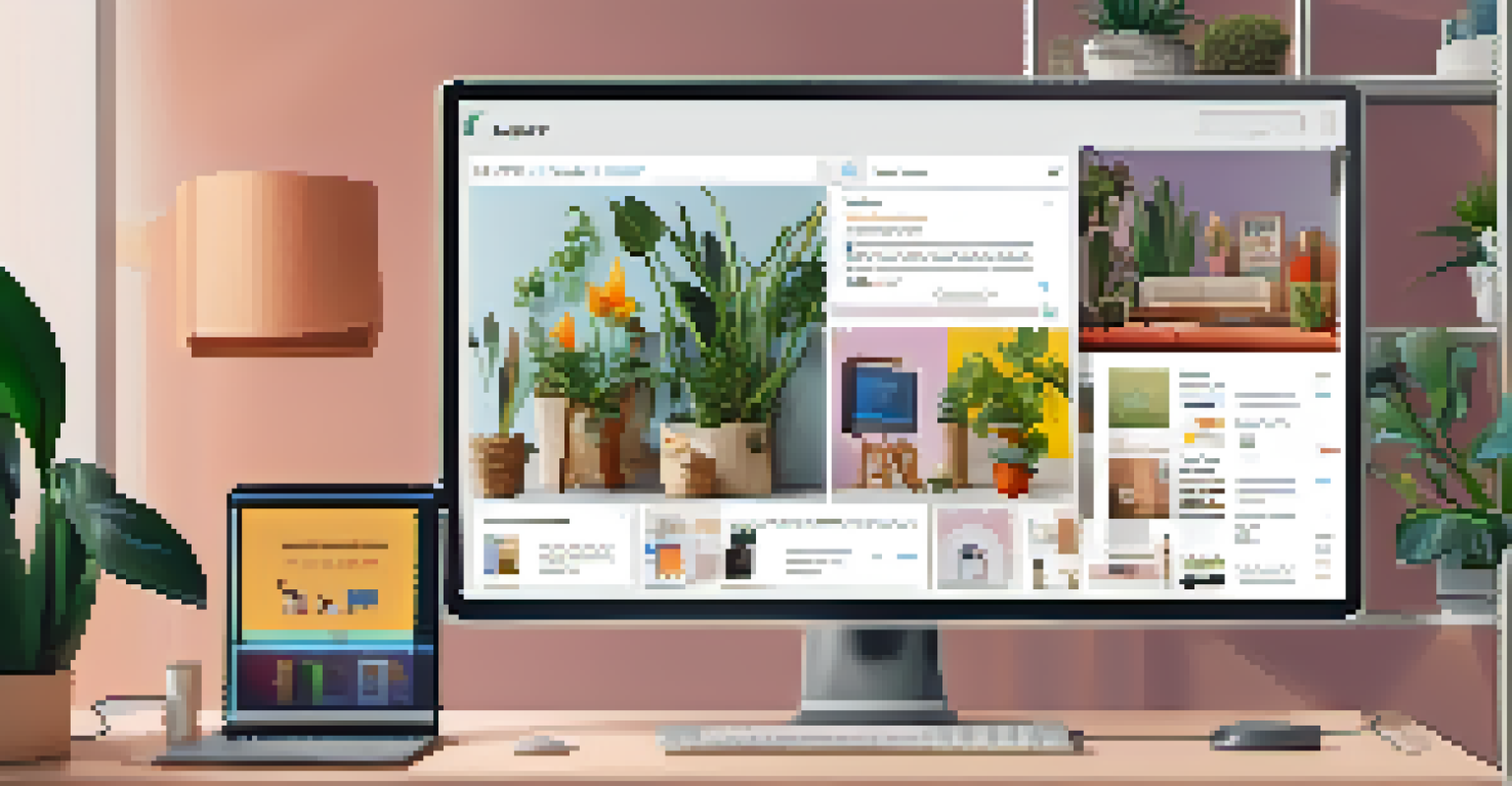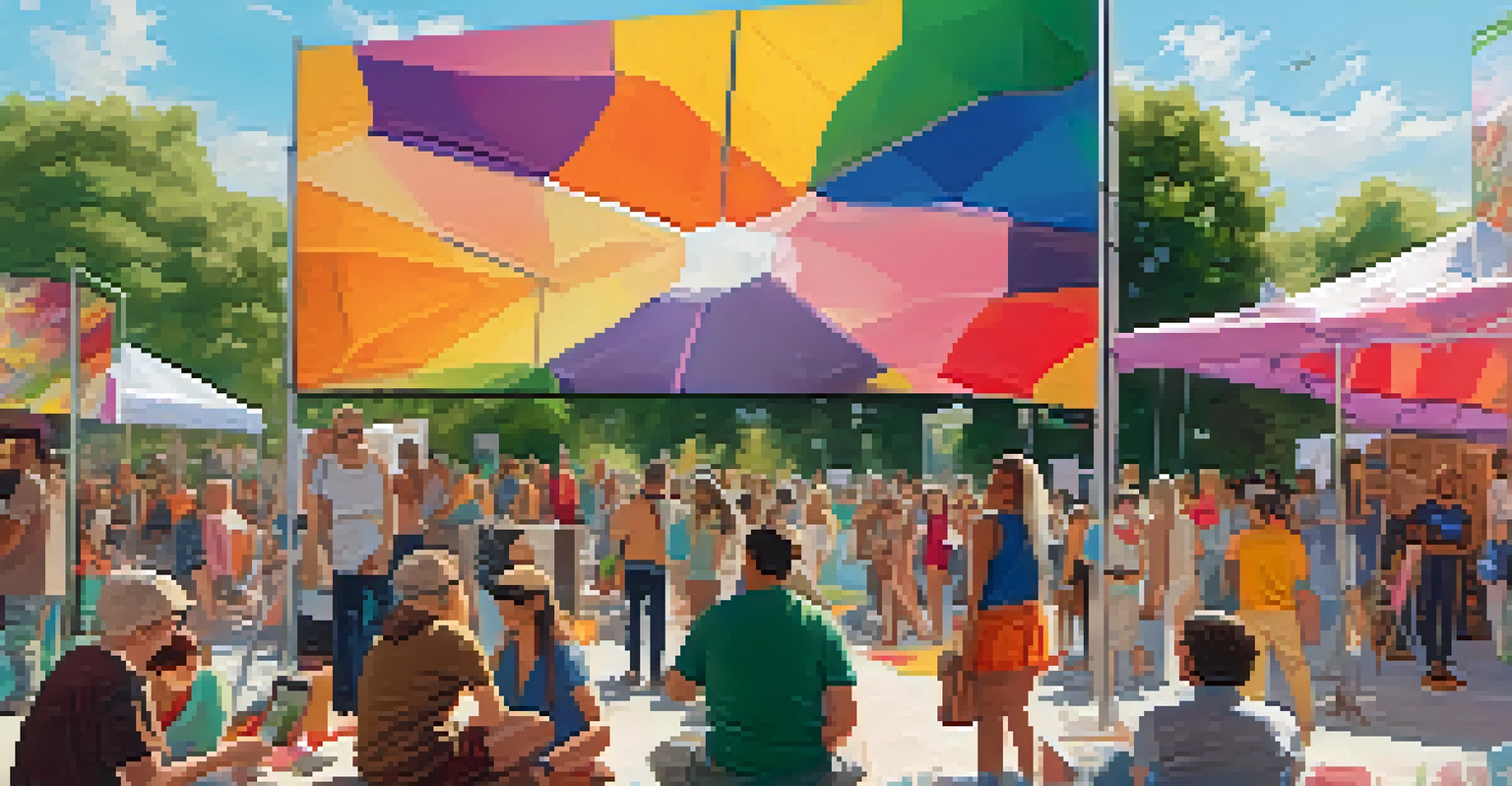NFTs and the Art Market: Investment Opportunities Explored

Understanding NFTs: The Basics Explained
Non-fungible tokens, or NFTs, are unique digital assets verified using blockchain technology. Unlike cryptocurrencies, which are identical and interchangeable, NFTs are one-of-a-kind, making them perfect for representing ownership of digital art and collectibles. This uniqueness is what gives NFTs their value in the art market.
NFTs are a new way to bring visibility to digital artists and the art they create.
Imagine a trading card; while many exist, each card has its own value based on rarity and condition. Similarly, NFTs can represent anything from digital paintings to music albums, and even virtual real estate, allowing artists to monetize their work in innovative ways.
As the art world evolves, NFTs are creating exciting opportunities for artists and investors alike, bridging the gap between traditional art forms and the digital realm.
The Rise of NFTs in the Art Market
The popularity of NFTs surged in 2021, with high-profile sales making headlines. Digital artists like Beeple sold pieces for millions, showcasing that the art market is not just confined to physical galleries anymore. This shift has drawn attention from both seasoned collectors and new investors.

With platforms like OpenSea and Rarible, artists can sell their work directly to buyers without the need for traditional intermediaries. This democratization of art sales has made it easier for emerging artists to gain recognition and for collectors to discover new talents.
NFTs Redefine Digital Ownership
Non-fungible tokens (NFTs) are unique digital assets that enable artists to monetize their work and represent ownership in a way that traditional art forms cannot.
As more individuals recognize the potential of digital art, the NFT market continues to grow, prompting investors to explore these unique assets as a viable investment opportunity.
Investment Potential of NFTs in Art
Investing in NFTs can be likened to purchasing rare artworks; the value is often subjective and can fluctuate based on market trends. Buyers should consider factors such as the artist's reputation, the uniqueness of the piece, and the overall demand in the market. Just as with traditional art, research is key.
The future of art is not just about the physical; it’s about the digital and how we can merge the two.
Some investors see NFTs as a hedge against inflation or as a way to diversify their portfolios. Given the digital nature of NFTs, they also provide an opportunity to own a piece of art that can be easily transferred or sold in various markets around the world.
However, potential investors should tread carefully, as the NFT market is still relatively young and can be volatile. An informed approach will help mitigate risks while maximizing potential returns.
Challenges and Risks of NFT Investments
While NFTs present exciting opportunities, they also come with significant risks. The market can be unpredictable, with prices for certain tokens fluctuating wildly in a short span. Investors must be prepared for the possibility of losing money, just as in any investment.
Additionally, the environmental impact of blockchain technology, particularly in energy-intensive processes like minting NFTs, raises ethical concerns for some investors. This has prompted discussions within the community about more sustainable practices.
Investment Risks and Rewards
While NFTs offer exciting investment opportunities, they come with risks due to market volatility, lack of regulation, and environmental concerns.
Finally, the lack of regulation in the NFT space can lead to issues such as fraud and copyright infringement. Investors should educate themselves and consider these factors before diving into the world of NFT art.
Navigating the NFT Marketplace
Finding the right platform to buy or sell NFTs is crucial for a successful investment experience. Various marketplaces cater to different types of art and audiences, so it’s essential to choose one that aligns with your interests. Popular options include OpenSea, Foundation, and SuperRare, each offering unique features.
When navigating these platforms, take time to explore the artwork and artists represented. Engaging with the community can also provide insights and support, helping you make informed decisions about your investments.
Moreover, understanding the fees associated with transactions on these platforms is vital. Buyers and sellers should be aware of gas fees, listing fees, and commission structures that can impact their overall returns.
The Role of Community in NFT Art
The NFT community plays a significant role in shaping the art market. Artists, collectors, and enthusiasts often collaborate and support one another through social media, forums, and events. This sense of community fosters innovation and encourages new artists to enter the space.
Social media platforms like Twitter and Discord have become hubs for NFT discussions, where creators can share their work and collectors can discover new pieces. Engaging with these communities can lead to valuable connections and insights, enhancing your understanding of the market.
Community Drives NFT Trends
The NFT community plays a crucial role in shaping the art market, fostering innovation and collaboration among artists and collectors through social media and events.
As the community continues to grow, it will likely influence trends and drive demand for specific types of art, making it essential for investors to stay connected and informed.
Looking Ahead: The Future of NFTs in Art
The future of NFTs in the art market holds immense potential as technology continues to evolve. With advancements in augmented reality and virtual reality, we may soon see a new dimension of art consumption where digital and physical realms merge seamlessly.
As traditional institutions begin to embrace NFTs, we may witness a shift in how art is valued and sold. Galleries and museums are starting to showcase digital art, which could lead to increased legitimacy and interest in NFTs as a serious investment.

Ultimately, the ongoing dialogue about NFTs will shape their role in the art market. As artists and collectors adapt to this new landscape, the possibilities for innovation and investment will continue to expand.